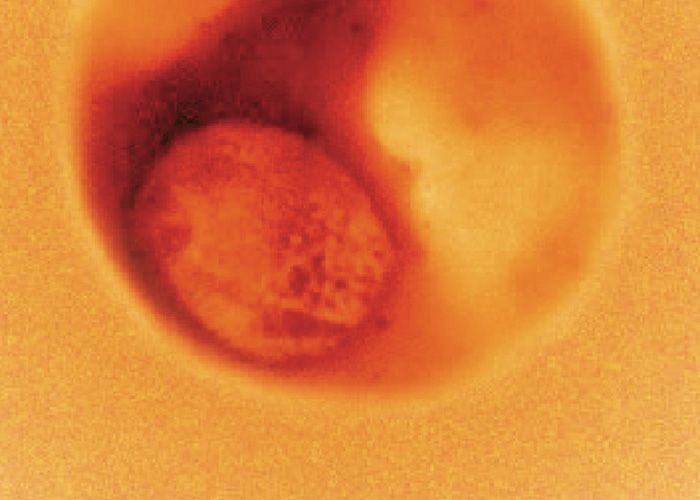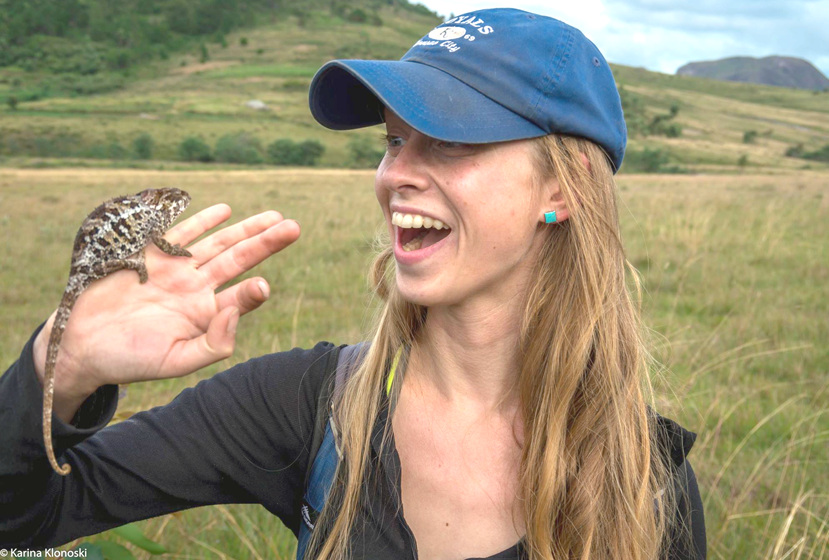
Each year, 300 to 500 million cases of malaria are diagnosed worldwide, of which 1.5 to three million, mostly in children, result in death. Drugs to treat malaria are too expensive for people in developing countries, hence the lack of proper treatment and the high mortality rate. Fortunately, a new, much less expensive anti-malarial drug will surface in the market in 2012, thanks to synthetic biologist Jay Keasling and his team at UC Berkeley. Developing this product is just one among many goals of the Synthetic Biology Engineering Research Center (SynBERC), where scientists are working to create efficient biofuels, biosensors, and cures for cancer and HIV.
Synthetic biology in the past
Synthetic biology has its roots in early research on DNA manipulation. In 1970, Daniel Nathans, Werner Arber, and Hamilton Smith identified restriction endonucleases, enzymes that can cut DNA strands at specific locations, which bacteria use as a defense mechanism against invading viruses. The discovery eventually led to the development of recombinant DNA techniques, which allow scientists to combine DNA sequences and introduce DNA from one organism into another. The term "synthetic biology" was first coined in 1974 by Waclaw Szybalski, now an oncology professor at University of Wisconsin-Madison Medical School, as he foresaw that the ability to build DNA sequences would eventually allow bioengineers to build "synthetic organisms," whose traits would be chosen by humans for useful applications.
Bringing ideas under one roof
In the summer of 2006, armed with a five-year, 16 million dollar grant from the National Science Foundation (NSF), bioengineers at UC Berkeley and other institutions across the United States formed SynBERC, a collaborative funding initiative whose primary goal is to bring together experts in multiple disciplines to develop synthetic biology. In addition to its research efforts, the program also has a strong educational component. In Berkeley, SynBERC members reach out to local high school and undergraduate students with unique summer programs and competitions focusing on synthetic biology.
Synthetic biology today
The exact definition of synthetic biology varies depending on whom you ask, since each researcher’s expertise and current project shape her view on the subject. The rapid growth of the field also makes it hard to label it with any specific stamp: a definition today may not apply to synthetic biology tomorrow. The backgrounds of synthetic biologists at SynBERC today are perhaps the best representation of this diverse and dynamic field of research.
Three main groups of scientists are joining the field: the protein engineers, who work with amino-acid building blocks; the metabolic engineers, whose focus is to regulate processes in cells to increase a cell’s production of certain substances; and the computer scientists, whose knowledge of manipulating and interpreting large datasets is critical.
The numerous research projects of synthetic biology today have one goal in common: finding standardized processes to design biological systems with practical functions for our society’s benefits.
Standardization is the key
As director of SynBERC, Professor Jay Keasling in the Department of Chemical and Biomolecular Engineering at UC Berkeley views synthetic biology as "the industrialization of biotechnology." Biotechnology, he claims, originally grew out of pharmaceuticals that were heavily restricted by patents, where each invention is independently made by individuals and is not readily available to be built upon by others. To overcome this obstacle to rapid progress, synthetic biology done at SynBERC is an open source, where scientists are free to learn from and build upon each other’s results to speed up the research process.
Bioengineers have worked with different applications that, while sharing the same technical foundations and roadblocks, used tools that were particular to each research problem. Thus, synthetic biologists wants to find a general procedure and to identify the circuitry rules that would guarantee a working system regardless of its application. A common but oversimplified analogy is that synthetic biology puts together biological parts just as electrical engineering and computer engineering put together an electronic circuit.
Part, device, chassis
 The rare plant Euphorbia resinifera produces DPP, a compound SynBERC hopes to be able to synthesize for HIV treatment.
The rare plant Euphorbia resinifera produces DPP, a compound SynBERC hopes to be able to synthesize for HIV treatment.
Following medical applications, the second most socially driven research area in synthetic biology is biofuels. The Berkeley SynBERC team carries out studies on this frontier at the Joint BioEnergy Institute (JBEI), a LBL-led scientific partnership between UC Berkeley, UC Davis, the Carnegie Institution for Science, Lawrence Livermore National Laboratory, and Sandia National Laboratory. Scientists at JBEI engineer microbes similar to yeast that can transform sugars from engineered plants into hydrocarbon-based fuels, such as butanol. The current highest production level for yeast is 2.5 mg of butanol per liter of growing substrate. Although this is still much lower than the 500 mg/l yield from engineered bacteria, researchers believe that yeast has high industrial value because of its robust growth and resistance to contamination.
Furthermore, Keasling announced in May 2010 that his team had successfully engineered E. coli to produce a biodiesel from hemicellulose, a sugar polymer present in large quantities in plant biomass. The engineered bacteria digest hemicellulose in such a way that the sugar is transformed into diesel, which is secreted by the cells and floats to the top of the culture where it can be collected. With very little purification, this diesel is ready for use.
Reaching out for more talents
As any ambitious goal requires a tremendous amount of work, SynBERC relies on collective effort to thrive. In terms of expertise, the field welcomes researchers from not only the biological sciences and engineering disciplines, but also humanities and anthropology. At SynBERC’s Human Practices Lab (HPL), anthropology professor Paul Rabinow and his colleagues ponder the relations among biotechnological advances, politics, and security. As Gaymong Bennett, assistant director of HPL, put it, "the job of the ethicists and lawyers among others is to set up regulations on how your stuff can get used outside of the lab." Such study is necessary whenever there are concerns about the potential impacts of a newly developed technology.
In terms of finance and educational outreach, five institutions - UC Berkeley, UC San Francisco, MIT, Harvard University, and Prairie View A&M University in Texas - and about twenty independent companies collaborate on funding and directing the research at SynBERC. As Anderson views it, the industry exposure also shows synthetic biology students the broad range of job opportunities available in the field, an important motivation for the pursuers of syn-bio study.
Get them while they’re young...
At the high school level, SynBERC and JBEI, among other laboratories in the Bay Area, open doors both figuratively and literally to host six students and two high school teachers each year in an eight week paid summer internship known as the Introductory College Level Experience in Microbiology (iCLEM). The program, founded in 2008 by two of JBEI’s postdoctoral researchers, Clem Fortman and James Carothers, gives the interns an opportunity to work with high-tech lab equipment and take part in the biofuel research at JBEI.
The goal of iCLEM is not to have results churned out by the end of each summer, but to arm the students and high school teachers with lab experience and research skills, while showing them the opportunities available in this new scientific field. Oakland Unity High School science department head Rowan Driscoll, iCLEM 2009 participant, praised the opportunity: "As a biology and chemistry teacher, I want to make education as real and as practical as possible. I want to open doors, open eyes, and help my students find avenues to use science to make themselves useful to society."
For both teachers and students, the research does not stop when the internship ends. Berkeley High School science teacher Kate Trimlett, also a participant in iCLEM 2009, decided to start teaching about biofuels in her classroom, organizing her students to collect and analyze bacteria from a compost heap to test their ability to break down cellulose. Such classroom outreach embodies the goal of iCLEM: to raise the level of interest in science of Bay Area high school students, and, hopefully, to inspire many of them to become future synthetic biologists. As Kate Spohr, SynBERC’s education and outreach coordinator, said, "We want to get them while they’re young."
...And they will revolutionize the way science is done
Beyond its presence in high school classrooms, SynBERC offers unparalleled opportunities for undergraduates to make a meaningful contribution to syn-bio research. Each year, five students are chosen to form the Berkeley International Genetically Engineered Machines (iGEM) competition team. The team is given a set of biological parts, with which they will build biological systems and operate them in living cells. This is not just a menial practice project, but, "part of cutting edge syn-bio research," says postdoctoral researcher Mariana Leguia. "The results they get will be used to advance the field." The iGEM team works full time in the summer, then present their results to other iGEM teams in an international competition held at MIT every November. Since its creation in 2004, the event has become an effective method to introduce undergraduates to synthetic biology research, and several winners have gone on to prestigious research institutions for their graduate study.
 Undergraduates on the Berkeley International Genetically Engineered Machines (iGEM) team have the opportunity to participate in some of the most cutting-edge research in the field.
Undergraduates on the Berkeley International Genetically Engineered Machines (iGEM) team have the opportunity to participate in some of the most cutting-edge research in the field.
Berkeley iGEM teams have won gold medals in the past five competitions with their innovations such as Clonebots (2008), a collection of devices and DNA strains to aid part synthesis and analysis, and Bactoblood (2007), a cost-effective red blood cell substitute constructed from engineered E. coli.
This year, the Berkeley iGEM team sets out to genetically engineer choanoflagellates (see "Redrawing the branches," current issue), single-celled organisms whose DNA is intractable by current methods in genetic engineering. "Since choanoflagellates eat bacteria, we plan on designing some bacteria that can do the job for us," says bioengineering major Christoph Neyer. The bacteria contain a set of proteins which are designed to insert a gene into the genome of the choanoflagellate once the bacteria get inside the choanoflagellate’s food vacuole.
If carried out successfully, the experiment will lay the foundation for a new technique in genetic manipulation of choanoflagellates. "These species are interesting because they are the closest living relative to the microbial ancestor that became the first multicellular animal," says iGEM team member Conor McClune. To be able to genetically manipulate these little creatures would allow scientists to learn more about the transition from single-celled organisms to multicellular ones, an important step in evolution history.
More importantly, projects like this are the best representation of SynBERC and synthetic biology research in general, in which two main themes dominate. First, doing science is a collaborative effort in which participants are responsible for inventing individual parts, which are then standardized. Second, these parts must be open source and available to anyone who is interested, accelerating future developments. Once these two requirements are met, the possible applications are limitless, or as Amy Kristofferson, a fourth-year molecular and cell biology student, puts it, "[synthetic biology] is creating all sorts of applications for genetic engineering that are in turn revolutionizing the way in which science is done."
This article is part of the Spring 2010 issue.



